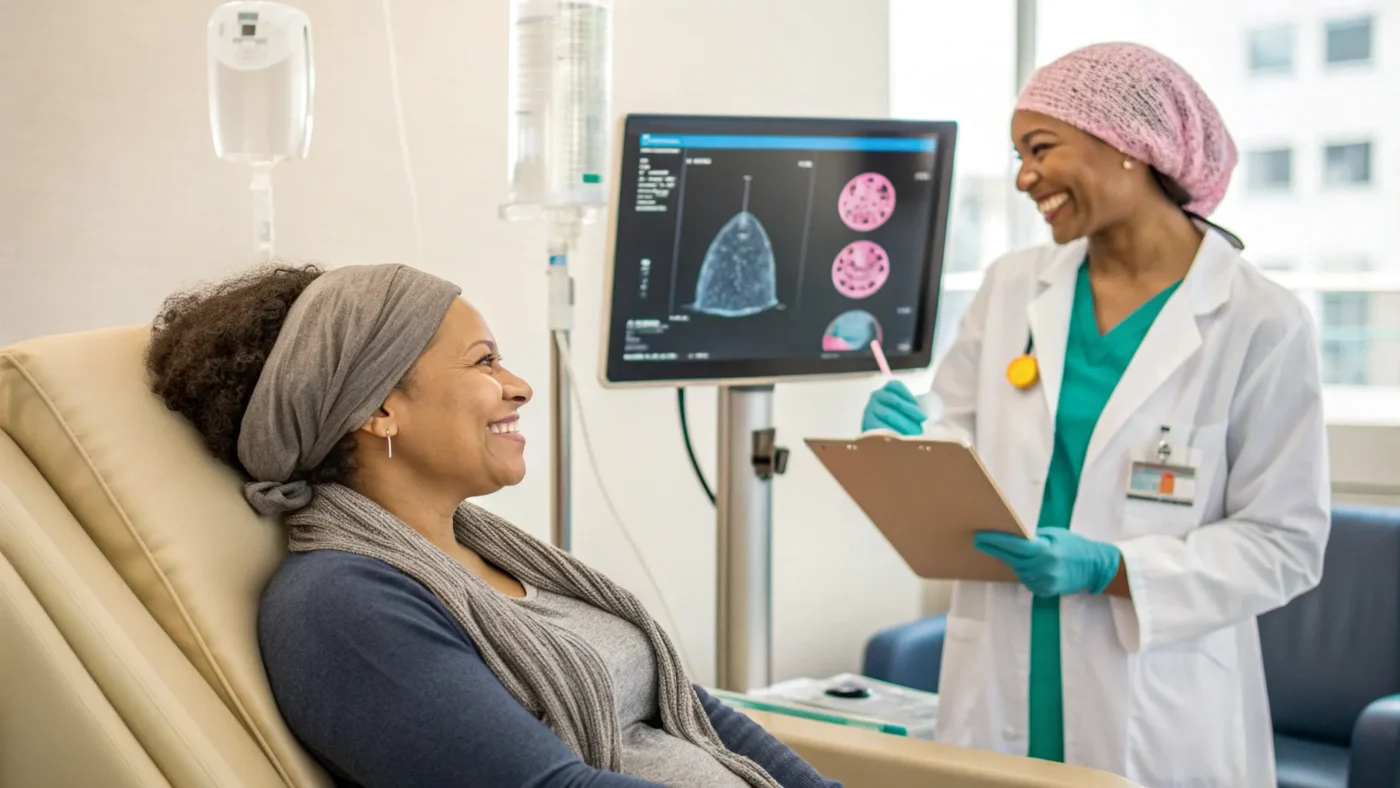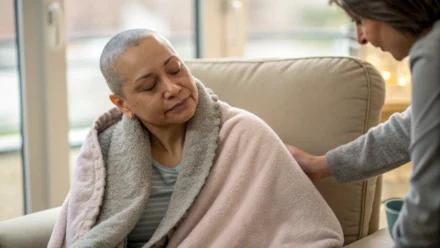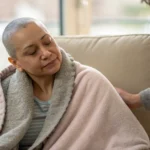I’m the author and educator from the Breast Cancer School for Patients, and in this comprehensive guide I will walk you through everything you and your care team should know about neoadjuvant chemotherapy — that is, chemotherapy given before surgery for breast cancer. When we know early on that chemotherapy will likely be part of your treatment plan, giving it before surgery can offer important advantages. My goal is to explain what neoadjuvant chemotherapy is, who may benefit from it, why tumor receptors and axillary imaging matter, how it affects surgical and radiation decisions, and practical steps you can take to make informed choices with your breast surgeon and medical oncologist.
“When you know early on you need chemotherapy for your breast cancer, there are distinct benefits to getting it before surgery.”
Introduction: Why this matters
Facing a breast cancer diagnosis brings a flood of decisions, and the timing of chemotherapy — before or after surgery — is one of the most important to get right. Most women with early-stage breast cancer who need chemotherapy receive it after surgery (adjuvant therapy). However, in many situations a thoughtful, multidisciplinary team may recommend delivering chemotherapy before surgery (neoadjuvant therapy). This approach is increasingly common at sophisticated breast centers because it can change the course of treatment and sometimes improve outcomes that matter to patients, including breast-conservation options and the ability to assess how well systemic therapy is working.
In this article I will lay out the rationale, the evidence-based considerations, and the practical steps you can take to determine whether neoadjuvant chemotherapy is right for you. I will also give you the specific questions to ask your breast surgeon and medical oncologist so you can participate actively in planning your care.
What is neoadjuvant chemotherapy?
Neoadjuvant chemotherapy is chemotherapy that is given before surgery. The purpose is to treat systemic disease early, shrink the tumor and involved lymph nodes, and potentially allow less extensive surgery while also giving immediate feedback on the tumor’s responsiveness to systemic therapy.
Traditionally, chemotherapy for invasive breast cancer has been administered after surgery, with the assumption that removing the tumor first and then treating microscopic disease makes sense. However, we now recognize that delivering chemotherapy first can offer distinct advantages in selected patients. The key is identifying at diagnosis — before any operation — which patients are likely to need chemotherapy anyway and which of those patients would particularly benefit from receiving it before the tumor is removed.
Two clinical situations: Later-stage and early-stage breast cancer
Neoadjuvant chemotherapy is standard for several later-stage or aggressive breast cancer presentations. It is also an increasingly used option for selected early-stage cancers.
- Later-stage or aggressive cancers: Inflammatory breast cancer, large tumors (for example, >5 cm), and cases with extensive nodal involvement are usually offered neoadjuvant chemotherapy. These cancers are more aggressive and have a higher chance of systemic spread; starting systemic treatment quickly is critical.
- Early-stage cancers: Tumors that are smaller (for example, 1–3 cm) but have receptor patterns or nodal involvement that make chemotherapy likely may also be candidates for neoadjuvant chemotherapy. In these situations, the team may offer chemotherapy up front to shrink the tumor and nodes, improve surgical options, and evaluate tumor response.
Potential benefits of neoadjuvant chemotherapy
When chemotherapy is clearly indicated, giving it before surgery may provide several benefits. I’ll review these in detail so you understand why many multidisciplinary teams are recommending this approach increasingly.
Begin systemic therapy sooner
One practical benefit is that you can start life-saving chemotherapy earlier. Scheduling and recovery from surgery sometimes delay the start of chemotherapy by several weeks. If chemotherapy is given first, you may receive systemic treatment six to eight weeks earlier than if you waited for surgery to occur and recover before beginning chemotherapy. In aggressive cancers, earlier systemic therapy may be particularly important.
Improved chances of breast conservation
One of the most visible benefits is that neoadjuvant chemotherapy can shrink the primary tumor enough to allow a breast-conserving operation (lumpectomy) instead of a mastectomy. In selected patients, a tumor initially large relative to the breast can respond dramatically to chemotherapy, sometimes shrinking to a size that permits lumpectomy with acceptable cosmetic results.
This is not just about preserving tissue; it’s about giving patients more choices. For many women, the possibility of preserving their breast — and avoiding a mastectomy — is an important quality-of-life outcome.
Better cosmetic outcomes
Shrinking the tumor can reduce the amount of tissue that needs to be removed and thus can improve cosmetic outcomes after surgery. A smaller excision often translates into a more symmetric breast shape and potentially less noticeable scarring when reconstruction is considered.
Time to make complex decisions
Neoadjuvant chemotherapy buys you time. Rather than making a rushed decision about lumpectomy, mastectomy, or bilateral surgery immediately after diagnosis, you have several months to weigh options, consult with plastic surgeons about reconstruction, and undergo genetic counseling and testing if you want to evaluate BRCA or other hereditary risk. This process can reduce decisional anxiety and help you make a plan aligned with your values.
Potential to avoid more extensive axillary surgery
One of the surgical implications of neoadjuvant chemotherapy is the potential to reduce the need for a full axillary lymph node dissection. If cancer is present in the lymph nodes before chemotherapy and then chemotherapy eradicates cancer cells in the nodes, the surgeon may be able to perform a sentinel lymph node biopsy rather than a complete axillary dissection, reducing the risk of lymphedema and other complications.
Early real-world test of chemotherapy effectiveness
Neoadjuvant chemotherapy gives your care team real-time feedback on how your cancer responds to systemic therapy. Tumor shrinkage during treatment is visible on examination and imaging, and the pathology of the removed tissue after surgery can tell us whether microscopic cancer remains.
When no cancer is detectable in the breast or lymph nodes at the time of surgery — a finding called a pathologic complete response (pCR) — this is associated with a favorable prognosis for certain tumor types (notably HER2-positive and triple-negative cancers). A pCR is excellent news and shows the chosen systemic therapy was highly effective for your tumor.
Possibly reduce the need for radiation after mastectomy
In some selected situations, having a strong response to neoadjuvant chemotherapy and limited residual disease can reduce the likelihood of requiring post-mastectomy radiation to the chest wall. This is assessed on a case-by-case basis and always involves discussion with the radiation oncologist.
Who might qualify for neoadjuvant chemotherapy?
Deciding whether neoadjuvant chemotherapy is right for you depends on the biology of your tumor, the size of the tumor and nodes, and your personal values about surgery and reconstruction. The decision is best made by a multidisciplinary team — your breast surgeon, medical oncologist, and often radiation oncologist — working together.
Below are typical scenarios in which neoadjuvant chemotherapy is considered:
- HER2-positive tumors: These cancers respond very well to chemotherapy combined with HER2-targeted therapies (for example, trastuzumab and pertuzumab). The combination often produces substantial shrinkage and higher rates of pCR.
- Triple-negative breast cancer (TNBC): TNBC does not respond to hormonal therapy but is often sensitive to chemotherapy. Neoadjuvant chemotherapy is frequently used because it can lead to pCR in a meaningful subset of patients, which correlates with improved outcomes.
- Estrogen receptor-negative tumors: ER-negative tumors rely less on hormonal treatments and are more likely to benefit from chemotherapy; sometimes this leads to recommending neoadjuvant chemotherapy.
- Cancer found in axillary lymph nodes before surgery: If an ultrasound or biopsy shows cancer in the nodes before surgery, we often consider neoadjuvant chemotherapy, particularly if nodal disease is significant. Treating nodes with chemotherapy can shrink them, and if nodes convert to negative, your surgery may be less extensive.
- Large primary tumors (>5 cm) or extensive nodal involvement: These later-stage presentations are commonly treated with neoadjuvant chemotherapy to reduce tumor burden and improve surgical options.
- Inflammatory breast cancer: Always treated with neoadjuvant chemotherapy because of its aggressive nature and high risk of systemic spread.
One practical point: tumor receptor information typically becomes available within a few days after the diagnostic biopsy. This information — whether the tumor is estrogen receptor (ER), progesterone receptor (PR), and/or HER2 positive or negative — is a major determinant of whether chemotherapy will be part of your plan. If these receptors indicate chemotherapy is likely, ask your surgeon whether neoadjuvant chemotherapy is an option.
Understanding tumor receptors: ER, PR, HER2, and triple-negative
The receptor pattern of a breast cancer — ER, PR, and HER2 status — is fundamental to treatment decisions. These receptors tell us how the tumor is likely to behave and which therapies will be effective. Let’s review what they mean and why each pattern matters for the neoadjuvant decision.
Estrogen receptor (ER) and progesterone receptor (PR)
ER and PR are hormone receptors. Tumors that are ER-positive (and often PR-positive as well) are driven by hormones and are typically treated with endocrine (hormonal) therapies such as tamoxifen, aromatase inhibitors, or ovarian suppression. These tumors are often less responsive to chemotherapy than ER-negative tumors, but chemotherapy is still used in many ER-positive tumors when other risk factors indicate a benefit.
If a tumor is ER-negative, chemotherapy plays a larger role in treatment because endocrine therapies are not effective. Many ER-negative tumors are considered for neoadjuvant chemotherapy if other features suggest benefit.
HER2 receptor
HER2-positive tumors overexpress the HER2 protein and can be very sensitive to HER2-targeted therapies (for example, trastuzumab/Herceptin and pertuzumab). The combination of chemotherapy with targeted HER2 therapy has produced dramatic responses in many patients. For HER2-positive disease, neoadjuvant chemotherapy plus HER2-targeted therapy is commonly used because it can significantly increase pCR rates and improve outcomes.
Triple-negative breast cancer
Triple-negative breast cancer (TNBC) lacks ER, PR, and HER2 expression. TNBC often behaves more aggressively but is frequently chemosensitive. Neoadjuvant chemotherapy is commonly offered because it can produce substantial downstaging and a pCR in a meaningful percentage of patients, which is associated with improved prognosis.
Why an axillary ultrasound matters
The underarm lymph nodes (axillary nodes) are a common first site of breast cancer spread. Traditionally, the surgeon’s clinical exam has been used to assess these nodes, but physical examination alone is not very sensitive. A normal-feeling axilla on exam can still harbor small metastases. That’s where an axillary ultrasound adds value.
An axillary ultrasound is a noninvasive imaging test that can visualize lymph nodes and detect suspicious features. If an ultrasound shows an abnormal node, the node can be biopsied (fine needle aspiration or core biopsy) to confirm whether cancer is present before any surgery happens. Knowing nodal status preoperatively is important for two reasons:
- If nodes are positive before surgery, that often indicates a higher-risk disease biology and increases the likelihood that chemotherapy will be recommended.
- If nodes are positive and neoadjuvant chemotherapy is given, a good response in the nodes may allow a less extensive axillary operation after chemotherapy (for example, sentinel lymph node biopsy rather than full axillary dissection).
For these reasons I encourage patients to ask their breast surgeon specifically: “Can we do an axillary ultrasound today?” and, “If it’s abnormal, can we biopsy the node so we know my nodal status before surgery?” This information can change the recommended sequence of treatment.
Inflammatory breast cancer: why neoadjuvant chemotherapy is always the first step
Inflammatory breast cancer (IBC) is a distinct, aggressive form of breast cancer that presents with rapid breast swelling, redness, and sometimes skin changes. It is more likely to have skin and nodal involvement and a higher risk of distant spread. Because of its aggressive nature and the appearance of spreading through lymphatics in the breast and skin, IBC is treated as a cancer emergency.
For IBC, the standard sequence is:
- Neoadjuvant chemotherapy — to control systemic disease and to reduce tumor burden.
- Surgery — typically a mastectomy after the tumor has been treated with chemotherapy.
- Radiation therapy — to the chest wall and regional nodes after mastectomy to reduce the risk of locoregional recurrence.
Starting chemotherapy immediately without waiting for surgery is essential for IBC because it gives the best chance to shrink the disease quickly and to treat potential microscopic spread early on.
How neoadjuvant chemotherapy is given and monitored
If you and your team decide to proceed with neoadjuvant chemotherapy, it is helpful to understand the practical steps in the process: timelines, monitoring, imaging, and what happens at surgery.
Typical timeline
- Neoadjuvant chemotherapy is usually given in cycles over approximately three to four months, although the specific regimen and number of cycles depend on the tumor type, the chemotherapeutic agents, and whether targeted HER2 agents are included.
- Most patients receive chemotherapy every two to three weeks (depending on the regimen). Many HER2-positive and triple-negative regimens are scheduled every two or three weeks for a total of four to six cycles or more.
- During this time you will have regular visits with the medical oncologist to monitor blood counts, side effects, and response, and to decide if additional imaging is needed.
Monitoring response
Monitoring occurs in three ways:
- Clinical exam: Your surgeon or oncologist will measure and palpate the tumor to document shrinkage.
- Imaging: Baseline imaging (mammogram, ultrasound, MRI) is often done before starting therapy and repeated during or after therapy to assess response. MRI is particularly helpful in some cases (for example, multifocal disease or when better anatomic definition is needed).
- Pathology at surgery: The most definitive assessment is the pathology report after the tumor is removed. If the pathology shows no residual invasive cancer in the breast and nodes, it is designated a pathologic complete response (pCR).
Tumor markers and clips
If the tumor is small and you are worried it will disappear completely with chemotherapy, many surgeons place a small clip in the tumor at the time of the diagnostic biopsy. This clip marks the original tumor site so that if the tumor responds dramatically and becomes impalpable or invisible on imaging, the surgeon can still localize and remove the correct area at the time of surgery.
Adjusting treatment based on response
Response to neoadjuvant chemotherapy can sometimes guide further therapy. For instance, lack of response may prompt a change in systemic therapy or consideration of clinical trials. Conversely, a complete response may influence discussions about the extent of surgery and adjuvant systemic therapy.
Surgery after neoadjuvant chemotherapy: options and considerations
Surgery after neoadjuvant chemotherapy is individualized depending on the degree of tumor response, the initial tumor size and location, the patient’s preferences, and other clinical factors.
Lumpectomy versus mastectomy
If neoadjuvant treatment has reduced the tumor to a size that allows adequate margins and acceptable cosmetic outcomes, breast-conserving surgery (lumpectomy) may be possible even when initial imaging suggested mastectomy. In other cases, mastectomy remains the appropriate choice, and the decision often depends on patient preference, genetic risk (BRCA status), multicentric disease, and the extent of residual disease.
Axillary surgery
Management of the axilla after neoadjuvant chemotherapy depends on pre-treatment nodal status and the response to therapy. Key considerations:
- If nodes were clinically and/or radiographically negative before treatment, a sentinel lymph node biopsy after chemotherapy is often sufficient.
- If nodes were positive before treatment and convert to clinically and radiographically negative after chemotherapy, many centers perform sentinel lymph node biopsy with careful technique (often using dual tracer and removal of nodes containing the pre-treatment clip) to avoid full axillary dissection in responders.
- If nodes remain positive at the time of surgery, an axillary dissection is typically performed.
These decisions require careful pre-treatment documentation of nodal status (hence the importance of axillary ultrasound and node clipping when positive) and coordination with your surgical team.
Pathologic complete response (pCR): what it means for you
Pathologic complete response (pCR) refers to the absence of residual invasive cancer in the breast and regional lymph nodes at the time of surgery after neoadjuvant therapy. Achieving a pCR is associated with improved outcomes in several tumor subtypes, particularly HER2-positive and triple-negative cancers.
Important points about pCR:
- pCR is a very favorable prognostic sign but is not an absolute guarantee of cure. It indicates a strong response to systemic therapy.
- For some patients, achieving pCR can influence recommendations for additional adjuvant therapy or reduce the need for certain local treatments, but decisions remain individualized.
- Even when a pCR is not achieved (i.e., residual disease remains), that information is useful. Residual disease after neoadjuvant therapy may lead to consideration of additional systemic therapy options or clinical trials tailored to residual disease characteristics.
Radiation therapy considerations after neoadjuvant chemotherapy
Radiation therapy planning after neoadjuvant chemotherapy depends on several factors, including initial tumor size, nodal status before treatment, and the amount of residual disease at surgery.
Key principles:
- If you have breast-conserving surgery after neoadjuvant chemotherapy, radiation to the whole breast is usually recommended as part of standard treatment.
- If you have a mastectomy, the radiation decision depends on initial and residual nodal and breast disease. For example, patients with inflammatory breast cancer will typically receive post-mastectomy radiation regardless of response. For others, extensive initial nodal involvement or large residual disease may prompt radiation to the chest wall and regional nodes.
Because neoadjuvant therapy changes the anatomy and disease status, the radiation oncologist should be part of the pre-treatment planning discussion whenever possible.
Genetic testing and timing of BRCA testing
Genetic testing for BRCA and other hereditary cancer genes can influence surgical decisions (for example, willingness to undergo bilateral mastectomy or to choose immediate reconstruction). Neoadjuvant chemotherapy can give you time to pursue genetic counseling and testing before definitive surgery so you can incorporate results into your surgical planning.
If you have a strong family history, early-onset cancer, or other red flags for hereditary risk, consider asking for rapid genetic testing or expedited counseling so that results are available before surgery. The neoadjuvant window (the months while receiving chemotherapy) is a valuable time to get this information without delaying systemic treatment.
Working with your multidisciplinary team
A thoughtful neoadjuvant plan starts with a multidisciplinary discussion between the breast surgeon, medical oncologist, and radiation oncologist. Your care team may also include plastic surgeons, genetic counselors, nurse navigators, social workers, and rehabilitation specialists.
When you meet your breast surgeon and medical oncologist, consider bringing a list of questions to ensure you cover the important topics. Here are recommended questions to guide your conversation:
- Do you know now, before surgery, if I will need chemotherapy?
- If yes, should we consider neoadjuvant chemotherapy before surgery?
- What are the benefits and risks of neoadjuvant chemotherapy for my tumor?
- Do my receptor results (ER/PR/HER2) suggest I will need chemotherapy?
- Do I have cancer in my axillary lymph nodes?
- Will you ultrasound my axillary lymph nodes today and biopsy if abnormal?
- Should a clip be placed in my tumor or sampled node to guide surgery later?
- How will we monitor response during neoadjuvant therapy?
- If I have a good response, how will that change the surgical plan?
- How will radiation decisions be made after neoadjuvant therapy?
- Should I pursue genetic testing now and how quickly can that be done?
- Are there clinical trials appropriate for my tumor type?
Common misconceptions and frequently asked questions
Patients frequently have concerns and misconceptions about neoadjuvant chemotherapy. Below I address several common questions to help you feel more informed.
Will the cancer spread if we delay surgery to give chemotherapy?
No. For the cancers where neoadjuvant chemotherapy is recommended, giving systemic therapy first does not increase the risk of spread. In fact, chemotherapy begins treating microscopic disease immediately. The cancers chosen for neoadjuvant therapy are selected because they are likely to respond to systemic therapy, and studies have shown that outcomes are comparable or improved when appropriately used.
Is neoadjuvant chemotherapy experimental?
For many tumor types and presentations — particularly HER2-positive, triple-negative, large tumors, and inflammatory breast cancer — neoadjuvant chemotherapy is standard of care. It is not experimental in these contexts. There are ongoing trials refining regimens and targeted agents, and your team may discuss clinical trials if appropriate.
What if chemotherapy doesn’t shrink my tumor?
If the tumor does not respond as expected, your medical oncologist may change the chemotherapy regimen or recommend prompt surgery. Lack of response is important clinical information and may steer subsequent treatment decisions; it is not a reason to avoid neoadjuvant chemotherapy when otherwise indicated.
Will achieving a pCR change my need for additional treatment?
Achieving a pCR is a very favorable result and may influence the intensity or duration of follow-up therapies for some tumor types. However, decisions about adjuvant therapy, radiation, and follow-up remain individualized based on initial disease characteristics, residual disease (if any), and available evidence.
Can neoadjuvant chemotherapy reduce the need for radiation?
Sometimes. If a tumor and nodes respond very well to neoadjuvant therapy, radiation recommendations after mastectomy may differ compared with what they would have been before systemic therapy. But radiation decisions depend on initial and residual disease, and some patients (for example, those with inflammatory breast cancer) will still need radiation even after an excellent response.
Side effects and practical planning for neoadjuvant chemotherapy
Neoadjuvant chemotherapy uses the same agents and protocols as adjuvant chemotherapy, so side effects and supportive care are similar. Planning ahead can make treatment easier to tolerate and less disruptive to your life.
Common side effects
- Nausea and vomiting — often manageable with anti-nausea medications.
- Fatigue — one of the most common complaints; generally improves after therapy ends.
- Hair loss — depending on the regimen; wigs, scarves, and cold caps may be options.
- Low blood counts (neutropenia, anemia) — monitored with routine blood tests; growth factors may be used.
- Neuropathy (tingling in hands/feet) — associated with some agents and can be dose-limiting.
- Infusion reactions (with certain targeted agents) — prevented or managed with premedication and monitoring.
Supportive care and logistics
Discuss the anticipated schedule of infusions, frequency of clinic visits, and who to call with side effects. Many centers offer nurse navigators, social work, and financial counseling. Coordinate work, childcare, and transportation in advance, and identify local support systems.
Clinical trials and evolving evidence
Neoadjuvant chemotherapy is an area of active research. Trials are testing novel agents, immunotherapy combinations (especially in triple-negative disease), and strategies to escalate or de-escalate therapy based on response. If you meet criteria, a clinical trial may provide access to promising new treatments and should be discussed with your medical oncologist.
How to advocate for yourself: questions to ask and actions to take
Here are practical steps you can take to ensure neoadjuvant chemotherapy is considered when appropriate:
- Ask early about receptor results. Request a copy of your pathology report from the diagnostic biopsy and ask your breast surgeon: “What are my ER/PR/HER2 results and what do they suggest about the need for chemotherapy?”
- Request an axillary ultrasound. Ask your surgeon to perform or order an axillary ultrasound to determine whether lymph nodes are involved prior to surgery.
- Discuss neoadjuvant therapy explicitly. Ask: “If I need chemotherapy, is neoadjuvant chemotherapy an option for me?” If your surgeon does not routinely discuss it, bring it up yourself.
- Ensure multidisciplinary input. Request that your case be reviewed by a medical oncologist and, ideally, presented at a multidisciplinary breast tumor board.
- Consider tumor marking. If a node is suspicious and biopsied, ask for the positive node to be marked (clipped) so it can be identified later if it responds to chemotherapy.
- Pursue genetic counseling early if indicated. If your personal or family history suggests hereditary risk, seek expedited testing so results can inform surgical decisions.
Case examples: how neoadjuvant chemotherapy can change the plan
Here are two illustrative, simplified scenarios that demonstrate how neoadjuvant chemotherapy can alter the surgical approach and prognostic information:
Case 1: HER2-positive tumor — conserving the breast
Jane has a 4.5 cm HER2-positive tumor on core biopsy. Her breast surgeon recommends mastectomy due to the tumor’s size relative to her breast. The medical oncologist explains that neoadjuvant chemotherapy combined with HER2-targeted therapy has a high likelihood of shrinking the tumor significantly. Jane receives neoadjuvant chemo and targeted HER2 therapy for four to six months, during which imaging shows marked shrinkage. At surgery she undergoes a lumpectomy and sentinel node biopsy. Pathology shows a pathologic complete response. Instead of a mastectomy, Jane preserves her breast and avoids a more extensive operation. The pCR provides excellent prognostic information and confirms the chosen systemic therapy was highly effective.
Case 2: Triple-negative tumor with positive node — reducing axillary surgery
Maria has a 2.2 cm triple-negative tumor and a suspicious axillary node visualized on ultrasound and confirmed positive by biopsy. Because of the nodal involvement and triple-negative biology, her team recommends neoadjuvant chemotherapy. After three months, the breast tumor becomes impalpable and the axillary node appears normal on imaging. Maria undergoes lumpectomy and targeted sentinel node biopsy; the clipped node is retrieved and shows no residual cancer. Because of the excellent nodal response, Maria avoids a full axillary dissection and the associated risk of lymphedema.
What to expect at the end of neoadjuvant therapy and next steps
After finishing neoadjuvant chemotherapy, your care team will reassess with physical exam and imaging. Surgery will be scheduled with the goal of removing any residual disease and assessing the cellular response. The pathology report from the surgical specimen will guide future decisions about additional therapies and radiation.
If residual invasive disease is present, your oncologist may recommend additional systemic therapy or enrollment in clinical trials targeted to residual disease. If a pCR is achieved, follow-up care is individualized based on initial disease characteristics and tumor biology.
Practical tips for patients considering neoadjuvant chemotherapy
- Bring a list of questions to each appointment and take notes. Consider bringing a trusted family member or friend to help process information.
- Request copies of all pathology and imaging reports so you can review them and ask informed questions.
- Ask for a timeline: when chemotherapy would start, how many cycles, what imaging will be repeated, and when surgery is expected.
- Plan ahead for support during chemotherapy — transportation, time off work, childcare, and emotional support.
- Seek a second opinion if you feel uncertain — particularly when a proposed plan does not include neoadjuvant chemotherapy but your tumor biology suggests it might be beneficial.
Resources and learning more
If you want a structured way to learn more, consider educational resources that focus on patient-centered explanations of receptor testing, pathology reports, axillary ultrasound, and chemotherapy options. The Breast Cancer School for Patients provides video lessons and a list of questions to prepare you for your next doctor visit. Registering for structured educational materials and checklists can help you be an informed partner in your care.
Conclusion: Be proactive and ask the right questions
Neoadjuvant chemotherapy is a powerful tool in modern breast cancer care. When you and your care team know early that chemotherapy is likely to be part of your treatment, giving it before surgery can offer meaningful benefits: beginning systemic therapy sooner, increasing the chance of breast conservation, improving cosmetic outcomes, reducing the need for extensive axillary surgery, allowing time for genetic testing, and providing valuable biologic information about how your cancer responds to therapy.
To take advantage of these benefits, it is essential to ask the right questions of your breast surgeon and medical oncologist, obtain receptor information from your biopsy, request an axillary ultrasound if nodal status is uncertain, discuss the placement of clips to mark tumors and nodes, and ensure multidisciplinary planning that includes input from surgical, medical, and radiation oncology.
If you are newly diagnosed and wondering whether neoadjuvant chemotherapy is right for you, begin the conversation with your breast surgeon: “Do you know now, before surgery, if I will need chemotherapy? If yes, should we consider neoadjuvant chemotherapy?” Armed with receptor results, axillary imaging, and a clear multidisciplinary plan, you and your team can make a confident, individualized treatment choice.
My aim is to help you get the best possible breast cancer care in your community. Educate yourself, ask the questions listed earlier, and partner with a multidisciplinary breast team so you can make the most informed decisions. If you’d like to dig deeper into any of the topics covered here — receptors, pathology reports, axillary ultrasound, or chemotherapy — I recommend reviewing structured educational lessons and preparing to discuss these issues at your next visit.
Remember: being informed is the first step to receiving the best care. Neoadjuvant chemotherapy is not appropriate for everyone, but when it is, it can change both treatment and outcomes for the better. Don’t hesitate to ask your providers whether it should be part of your plan.











Leave a Comment